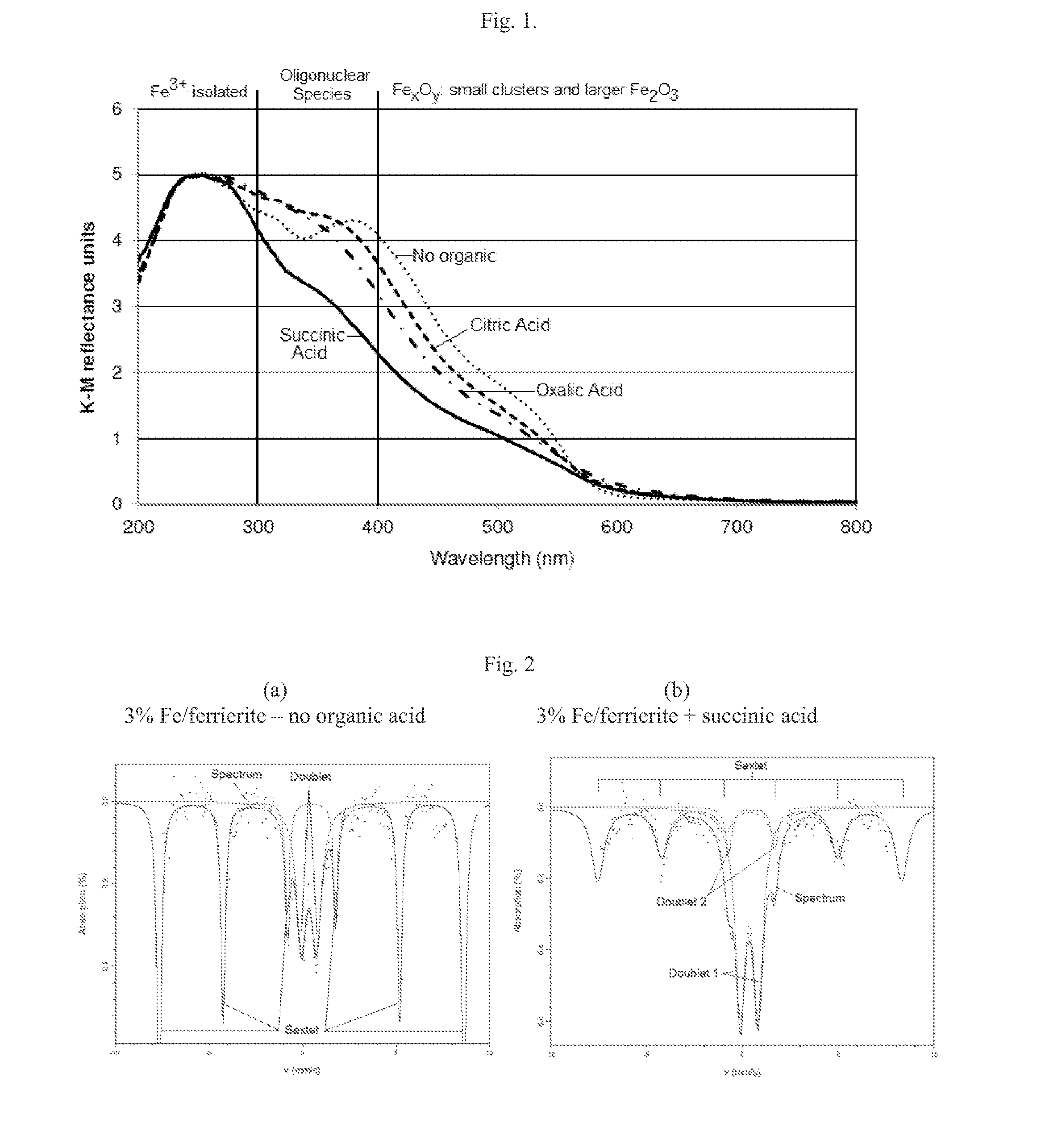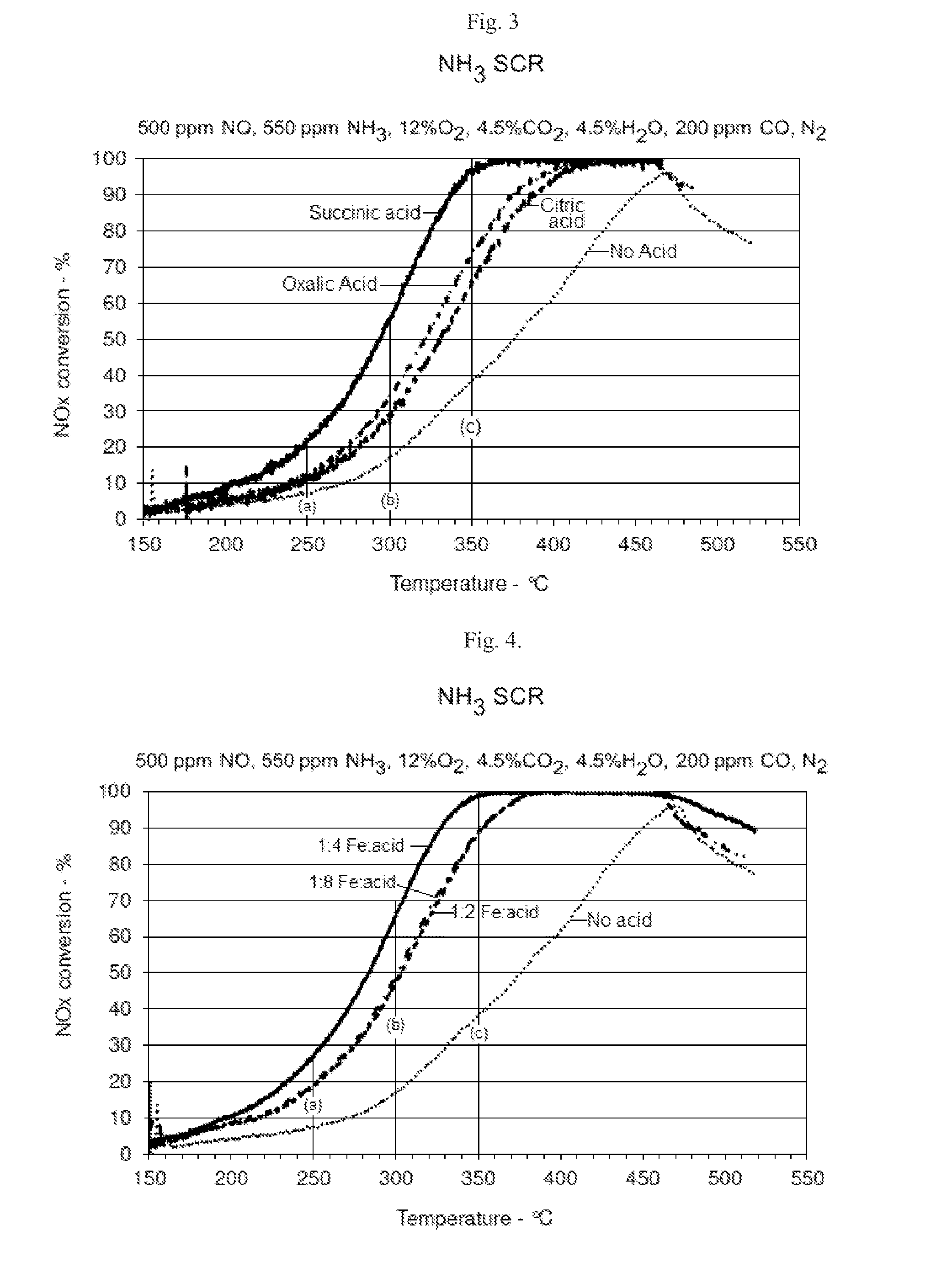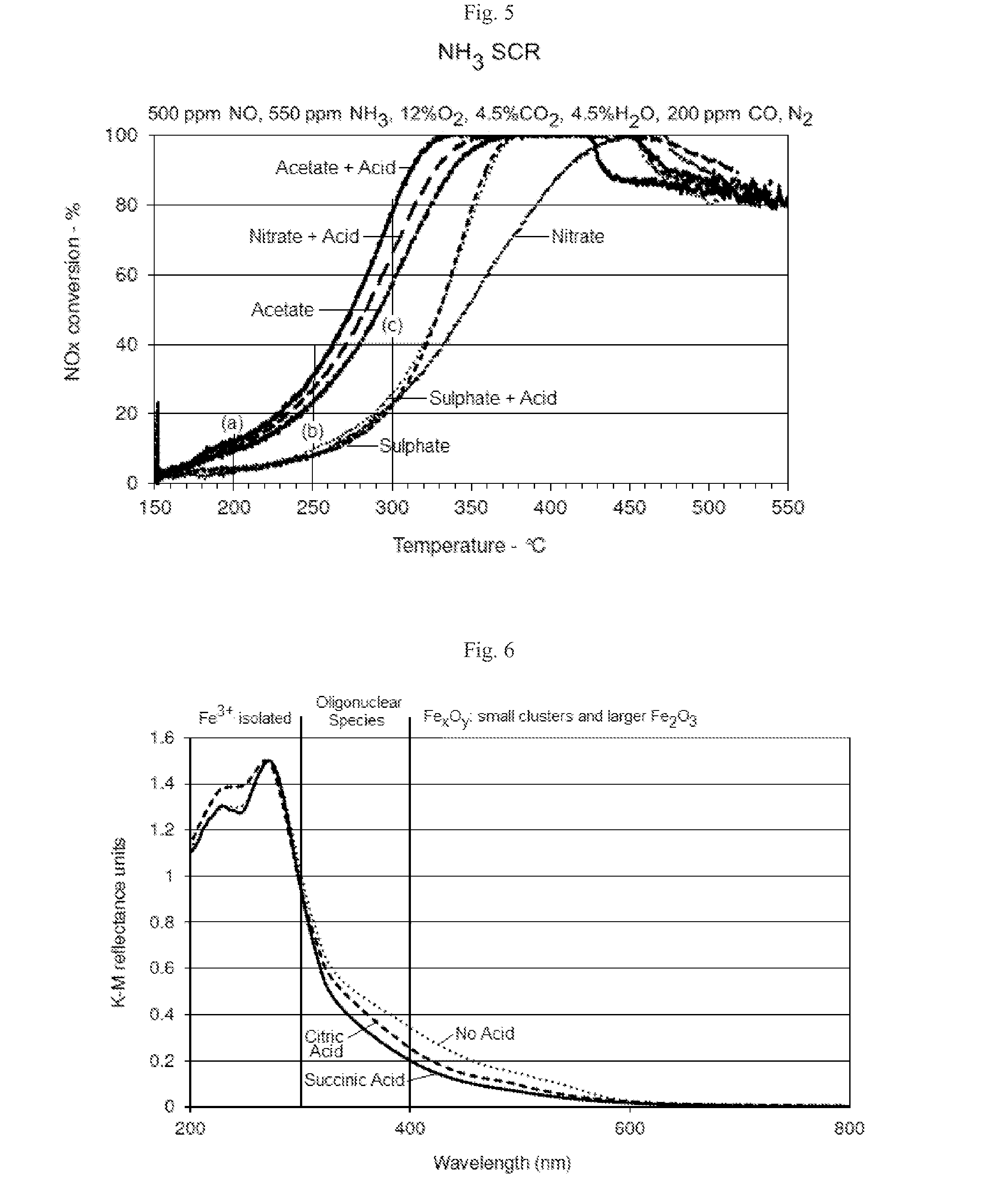Scr catalysts having improved low temperature performance, and methods of making and using the same
a technology of scr catalysts and low-temperature performance, which is applied in the field of molecular sieve-based catalysts, can solve the problems that the scr catalysts are not suitable for higher temperature environments, and achieve the effects of improving the dispersion of iron, improving the low-temperature performance and/or the ageing resistance of the molecular siev
- Summary
- Abstract
- Description
- Claims
- Application Information
AI Technical Summary
Benefits of technology
Problems solved by technology
Method used
Image
Examples
example 1
Effect of the Addition of Different Organic Acids on SCR Activity of Iron Ferrierite
[0047]The low temperature activity of an iron zeolite catalyst can be enhanced by addition of organic acids during the impregnation of iron into the catalyst. The improvement can be attributed to improved iron exchange and redispersion due to an exotherm effect during calcination and possibly creating a locally reducing environment.
[0048]Modified 3 wt % Fe / ferrierite catalysts were prepared by impregnating a commercially available ferrierite zeolite with a solution of iron (III) nitrate and an organic acid (citric, succinic or oxalic acid). The molar ratio of Fe:organic acid was 1:4. The samples were dried at 105° C. overnight and then calcined for 2 hours at 500° C.
[0049]The powder samples were analyzed by diffuse-reflectance UV-Vis in a Perkin-Elmer Lambda 650S spectrometer equipped with an integrating sphere using BaSO4 as a reference. The samples were placed and packed in a holder. The scan inter...
example 2
Effect of Molar Ratios of Iron to Organic Acid in the Preparation of Iron Ferrierite on Catalytic Activity
[0054]Succinic acid was selected as the organic acid to study the effect of different molar ratios of iron to organic acid.
[0055]Modified 3 wt % Fe / ferrierite catalysts were prepared by impregnating a commercially available ferrierite zeolite with a solution of iron(III) nitrate and different amounts of succinic acid so that the molar ratio of Fe:organic acid was 1:2, 1:4 and 1:8. The control sample did not have any succinic acid added. The samples were dried at 105° C. overnight and then calcined for 2 hours at 500° C.
[0056]As shown in FIG. 4, at each of the molar ratios of Fe:succinic acid tested, NOx conversion was significantly improved in comparison to an otherwise identical iron ferrierite zeolite prepared that did not use succinic acid. At 200° C., the catalyst produced using 1:4 Fe:succinic acid had approximately twice the NOx conversion as the catalyst that did not use ...
example 3
Effect of Iron Salt Precursors in Iron Ferrierite on Catalytic Activity
[0059]Succinic acid was selected as the organic acid to study the effect of different iron salts on the catalytic activity of the catalyst.
[0060]Modified 3 wt % Fe / ferrierite catalysts were prepared by impregnating a commercially available ferrierite zeolite with a solution of succinic acid and iron (III) nitrate, iron (II) acetate or iron (II) sulphate to give a molar ratio of Fe:organic acid of 1:4. Control samples did not have any succinic acid added. The samples were dried at 105° C. overnight and then calcined for 2 hours at 500° C.
[0061]As shown in FIG. 5, samples produced using acetate, acetate plus succinic acid and nitrate plus succinic acid provided significantly improved NOx conversion in comparison to samples produced using nitrate, sulphate or sulphate plus succinic acid. At 200° C., catalyst produced using acetate, acetate plus succinic acid and nitrate plus succinic acid had approximately twice the...
PUM
| Property | Measurement | Unit |
|---|---|---|
| temperature | aaaaa | aaaaa |
| temperatures | aaaaa | aaaaa |
| temperatures | aaaaa | aaaaa |
Abstract
Description
Claims
Application Information
 Login to View More
Login to View More - R&D
- Intellectual Property
- Life Sciences
- Materials
- Tech Scout
- Unparalleled Data Quality
- Higher Quality Content
- 60% Fewer Hallucinations
Browse by: Latest US Patents, China's latest patents, Technical Efficacy Thesaurus, Application Domain, Technology Topic, Popular Technical Reports.
© 2025 PatSnap. All rights reserved.Legal|Privacy policy|Modern Slavery Act Transparency Statement|Sitemap|About US| Contact US: help@patsnap.com



